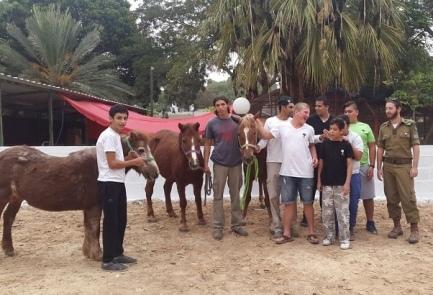Students study horseback riding
Yair Farjoun, the head of the Hof Ashkelon Regional Council, added that "we make it possible for every student to acquire the tool kit that suits him or her, and we're thrilled over the opportunity to enrich and further develop a curriculum that provides an added bonus."
According to Vered Flamenbaum, the principal of the Yad Mordechai high school, "Certain aspects of the riding and grooming class grant the student a physical and emotional calm. The students develop a sense of responsibility, self-control and mutual obligation, toward one another, the horses, and toward all animals and people in general. We have been pleased to discover the magnitude of the positive impact this class has had on the students."
Another educational program to help students better express their emotions, which was also created as part of the lessons learned following Operation Protective Edge, saw children over a three-month period photograph scenery and landscapes in the Gaza and Hof Ashkelon regions depicting their home as a safe place -- despite the pervading security tensions. This project is also part of the Association for Children at Risk's work to incorporate creativity and art as tools with which to cope with difficult events.
Gadi Golan

